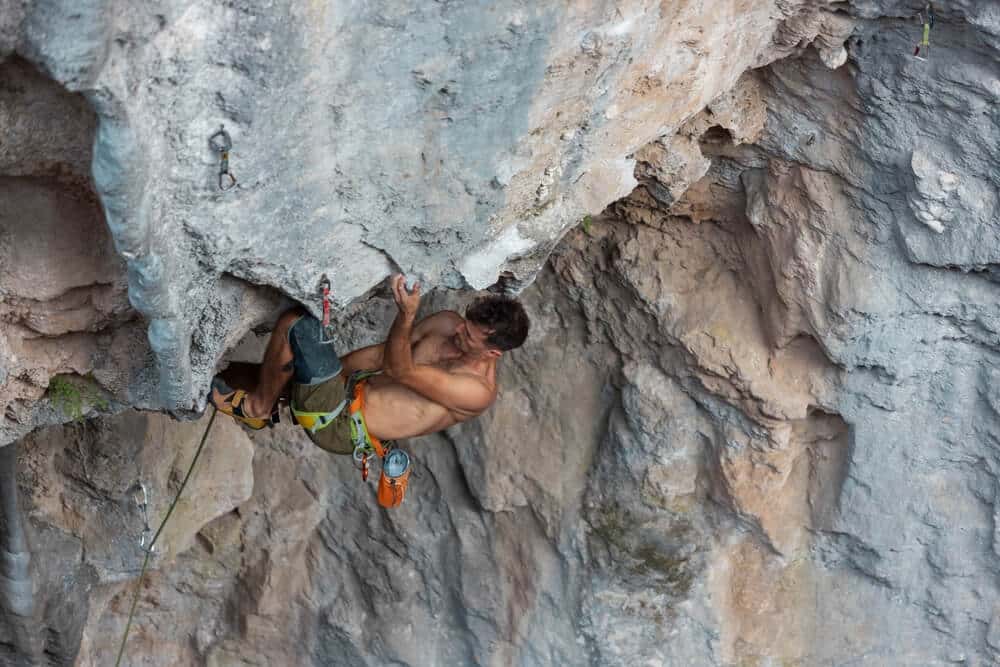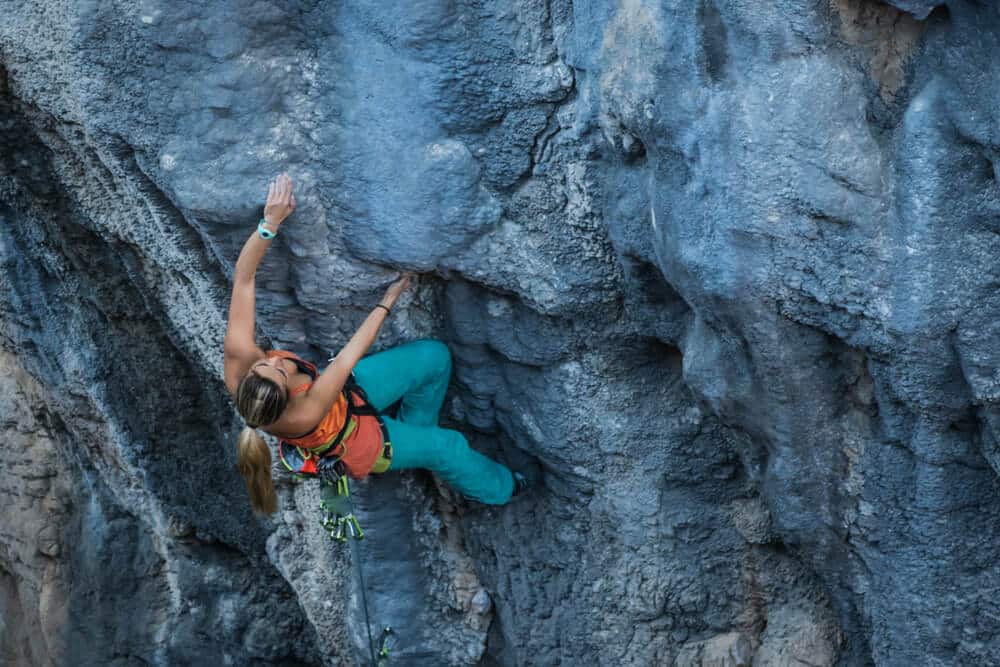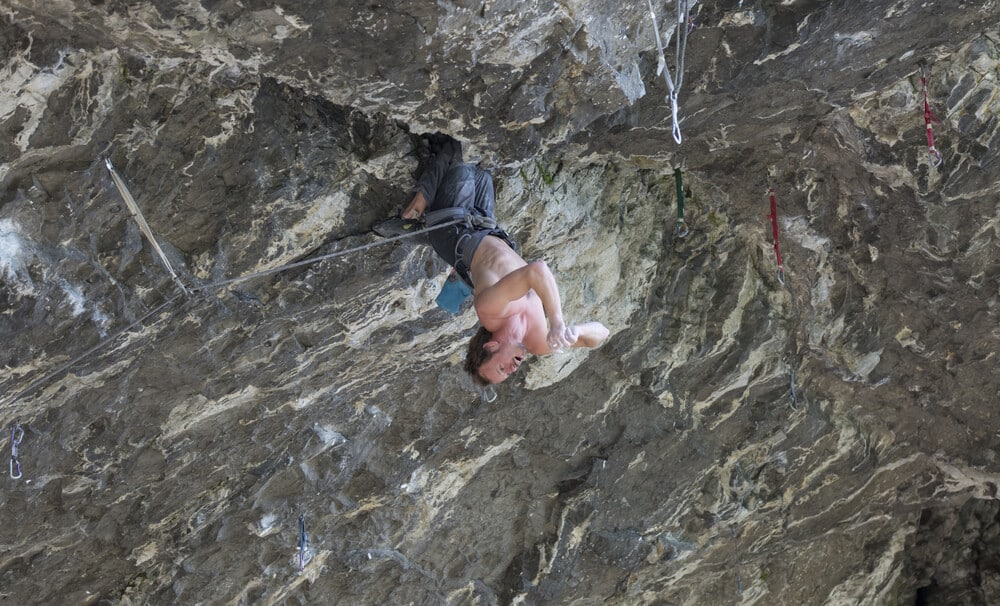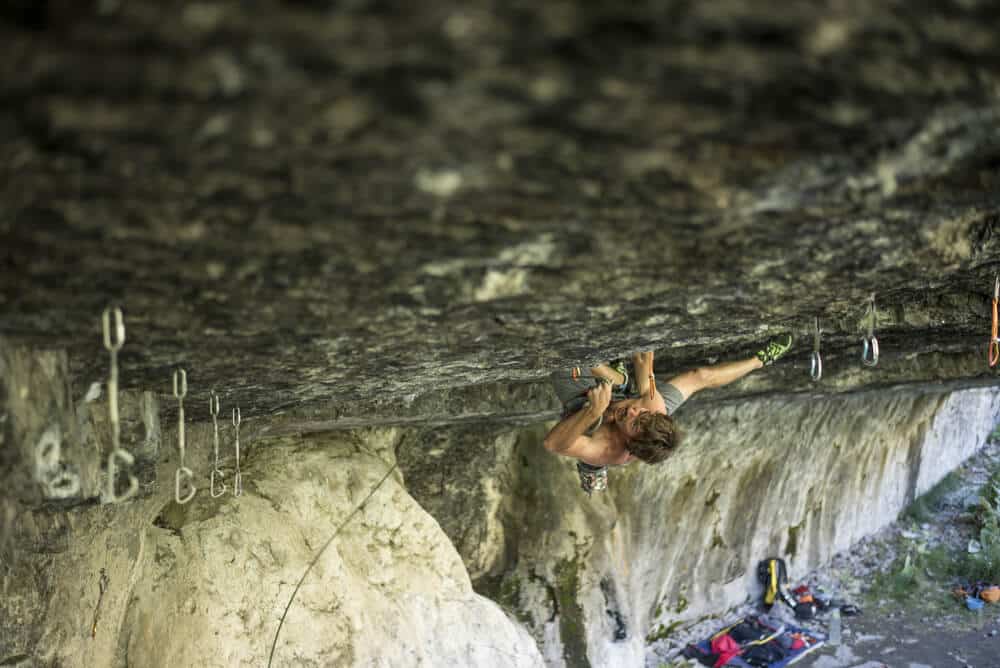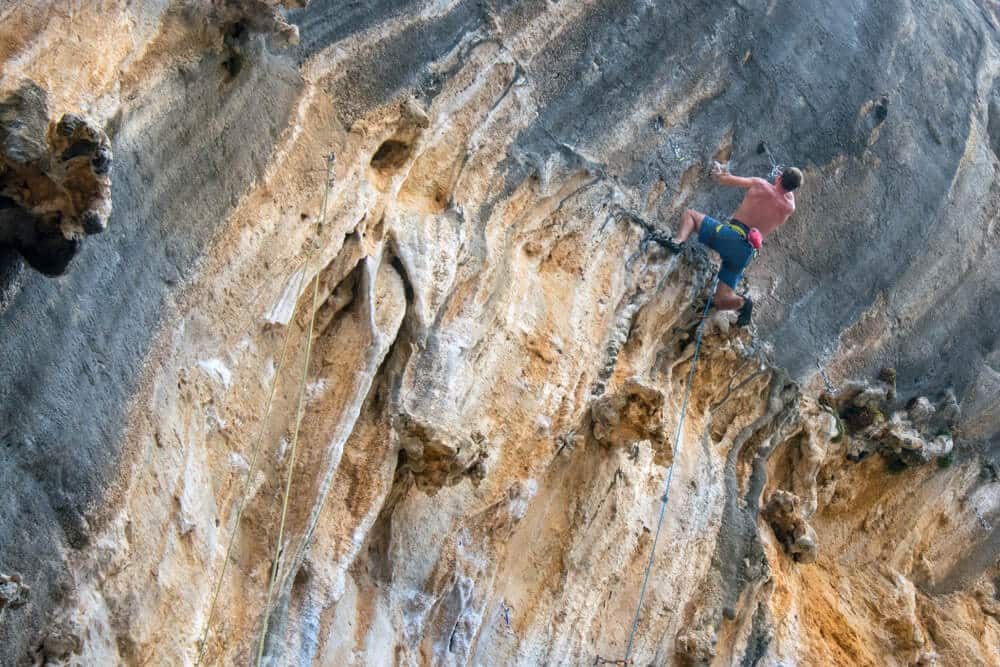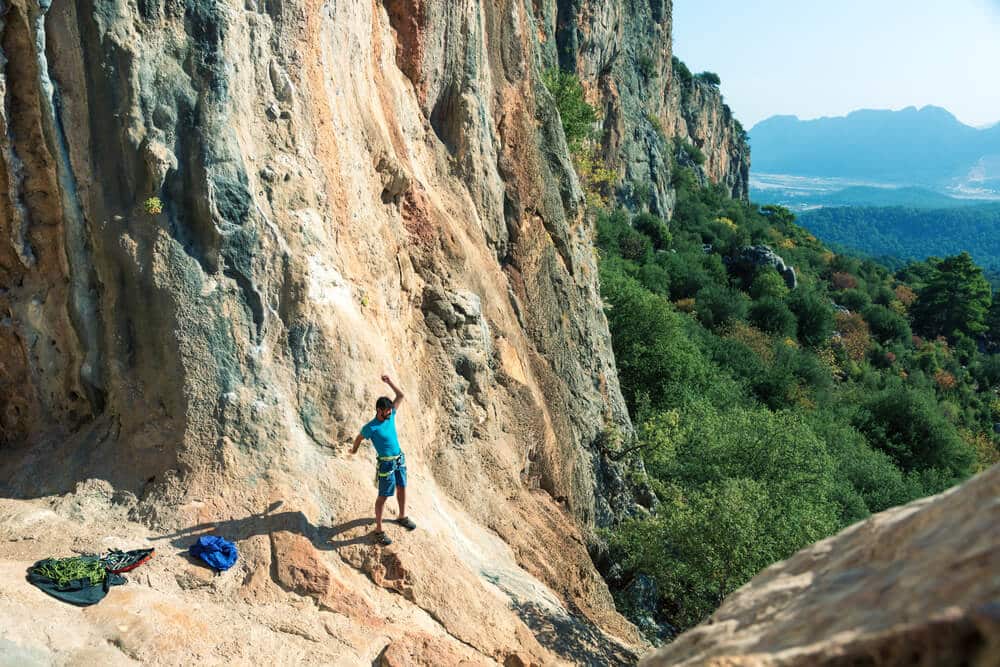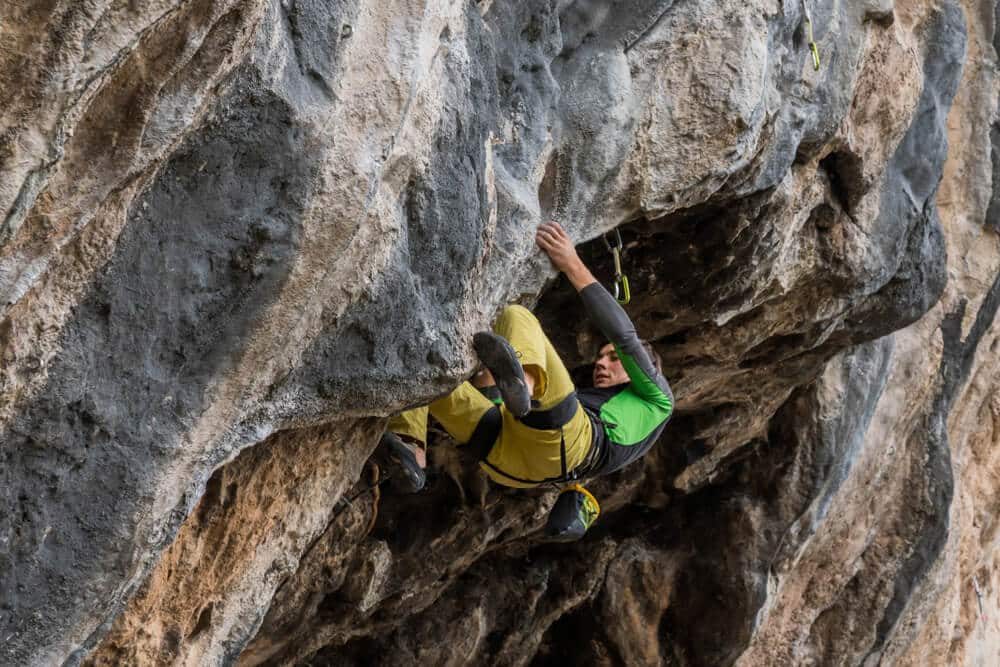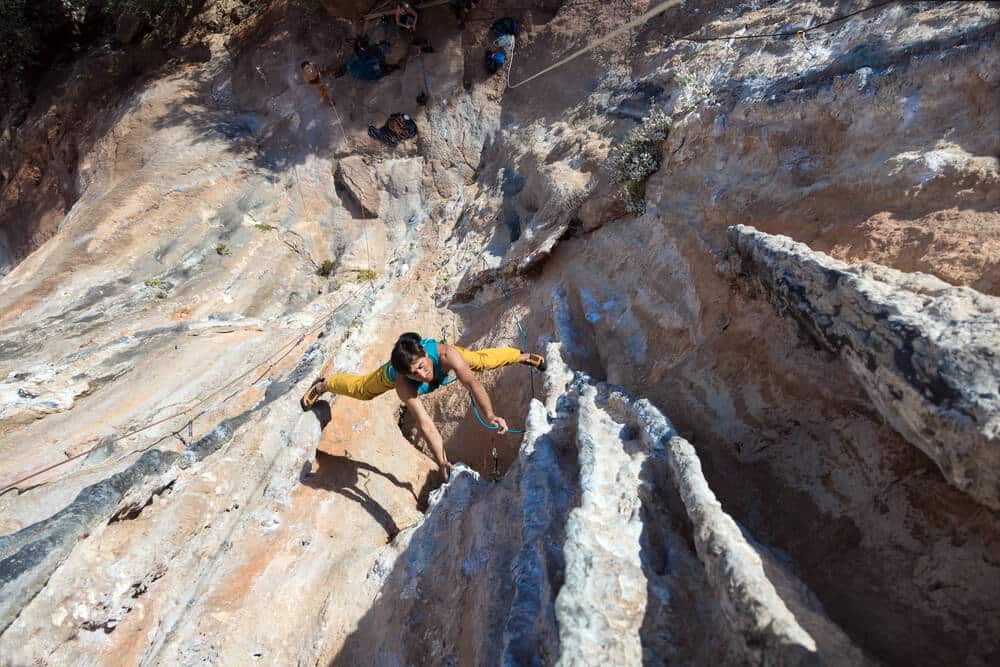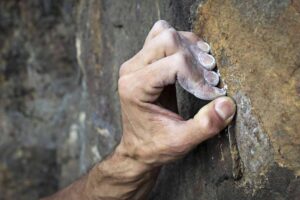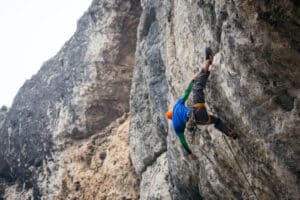Rock climbing is rarely solely about sheer strength. Yes, having strength helps you climb, but even the strongest climbers worldwide will tell you that technique is more important than strength or power. That’s why filling up your technique toolbox is one of the most important things you can do as a budding climber.
One of the most important climbing techniques, especially in steep overhanging terrain, is the kneebar.
In this article, I will discuss what kneebars are, how to use them, and offer some thoughts regarding how kneebars (and kneepads) affect how routes get graded and possibly downgraded.
What is a Kneebar?
A kneebar is a climbing technique where you use your toe and lower thigh to create counterpressure against the rock to hold your body close to the rock, maintain static control, and rest your arms.
How to Kneebar
Every kneebar is different depending on the nuances of the rock, a climber’s experience level, and body type. However, some core fundamentals of kneebarring pertain to the entire spectrum of kneebars.
Understanding this, I’ll run through the steps for placing a generic vertically-orientated kneebar to highlight the most basic aspects of the technique. Then, for a “tour” of different kneebars, I highly recommend this cool video from Send Climbing.
The Basic Kneebar
In this scenario, you can imagine using a good hold for your foot positioned vertically beneath an overlap of rock, like underneath a flake, bulge, or roof. The procedure is the same for using either knees.
-
Place your foot on the foothold. Always focus your toe placement on your big toe.
-
Position your knee and lower thigh underneath the overlap of rock.
-
Press down through your foot into the foothold to raise your knee upward into the rock.
-
Maintain pressure throughout the entire leg, from your toe through your calf and up to your knee and thigh.
-
To remove the kneebar, release the pressure you are applying through your big toe and foot and pull your knee out from underneath the overlap.
Why are Kneebars Important?
In climbing, we talk a lot about climbing with our legs and pushing ourselves up the wall instead of climbing with our arms and pulling ourselves up the wall.
Kneebars are important because they allow you to do exactly that– they allow you to use your legs in a highly strategic and technical manner to help you rely less on your arms to improve your climbing performance.
How Kneebars Get Used
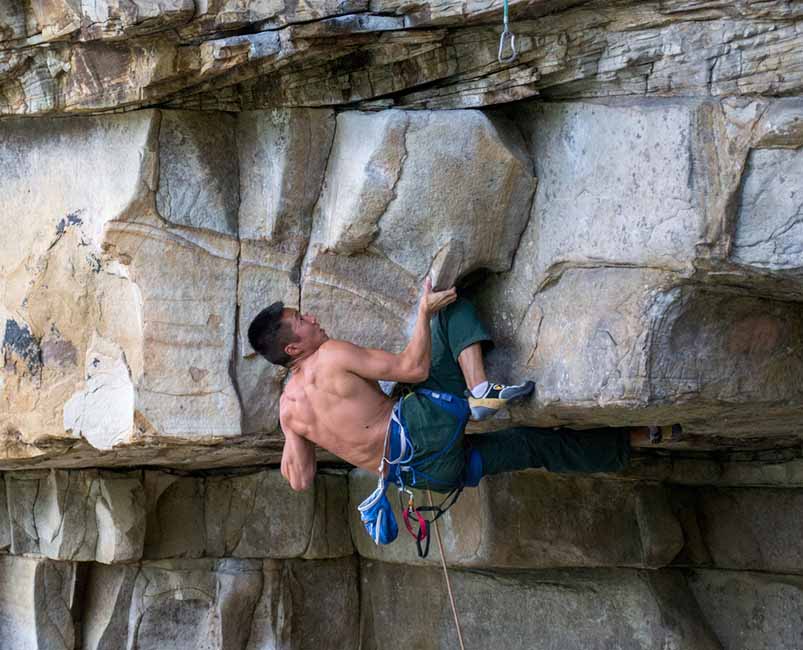
The kneebar is a multifaceted climbing technique that can serve you in many ways. I want to talk about three of the most common ways to use the kneebar movement to improve the effectiveness of your climbing.
Kneebars are Helpful for Making Dynamic Moves
When climbing through steep overhangs, one of the most effective climbing techniques for maintaining power endurance is climbing with your hips close to the wall and with a tight abdominal core. By doing this, you can climb more with your lower body and less with your upper body, wasting less power and improving endurance.
You can also make bigger moves and reach further holds.
The primary advantage of kneebars is that they bring you closer to the rock. By bringing your body weight closer, you can transfer weight and pressure off your arms and into the kneebar. This helps you get closer to the rock, tighten your core, and make more powerful moves.
Kneebarring is Ideal for Resting
One of the most common ways to use a kneebar is for resting. When properly placed and engaged, a high-quality kneebar can drastically reduce the body weight you are holding with your hands.
Then, if the kneebar is good and the stance is secure enough, you can let go completely with your hand and shake out.
In some scenarios, it may be possible to place a double kneebar. This is when both legs are kneebarring instead of just one. With a double kneebar, you can usually transfer the majority, if not all, of the body weight you are holding your hands to your legs.
For example, Adam Ondra deployed mutiple kneebars to rest his hands while climbing Silence, the world’s first 9c (5.15d).
You Can Kneebar to Clip a Bolt or Place Gear
When it’s time to clip the next bolt or place a piece of gear in steep, overhanging terrain, you can use a kneebar to add security to your stance. With a more secure stance, it will be easier for you to let go with one hand to clip or place gear.
In this scenario, it’s most common to clip with the hand on the same side as the kneebar. For example, if it’s possible to place a really good left kneebar, you’ll feel most comfortable releasing your left hand to make the clip.
Common Kneebar Mistakes
Kneebars are becoming more commonplace in climbing. That means rouesetters are incorporating them into indoor climbs, and more climbers are strapping on knee pads for their outdoor projects. However, there seems to be a gap between knowing what a kneebar is conceptually and putting it into practice correctly, which results in some common mistakes.
1.) Failing to Engage the Kneebar
Placing a kneebar is different from placing and engaging a kneebar. Sometimes, climbers only do the former when they should be focusing on doing the latter.
Placing a kneebar by itself can be helpful– the additional friction you create is always a good thing. However, to fully reap the benefits of a solid kneebar, you must engage your leg (and keep it engaged).
You can do this by focusing on flexing your leg and pressing your toe into the rock while your knee and thigh press into the rock on the other side. As you hang there to rest or continue climbing into the next sequence, don’t lose track of what you’re doing with the kneebar– focus on continuing to engage the kneebar throughout the entirety of its placement.
2.) Using the Actual Kneecap
The name for the kneebar climbing technique can be slightly misleading. That’s because the name might suggest that the primary point of contact between your leg and the stone should be your patella bone or kneecap.
However, that’s not entirely true.
Where exactly you place your kneebar will depend on the rock and the size of your leg, but the kneecap is rarely the primary point of contact. That would be super painful.
Instead, the bulk of the best and most secure-feeling knee bars focus the majority of the contact just above the kneecap along the very lower portion of the thigh muscle.
Therefore, when placing a solid kneebar, you should avoid specifically only using the kneecap.
3.) Not Warming Up Leg Muscles
Rock climbing is often considered an upper-body sport. This means that most climbers only focus on warming up and training their upper body for climbing. However, contrary to popular belief, rock climbing is a full-body sport– it incorporates muscles, tendons, ligaments from your fingertips to your toes and everything in between.
This is especially true for steep, technical, and powerful climbing on overhanging terrain where you often find kneebars. Therefore, to be fully prepared for this terrain, it’s critical to warm up your lower body before climbing. That way, you can avoid injury when you slam in a kneebar and wrench on it to make the next move.
4.) Kneebaring Without Kneepads
Placing the occasional kneebar without wearing kneepads is totally doable. However, if the bulk of your route or boulder problem requires kneebarring, or if the crux sequence demands a solid kneebar, you are doing yourself a disservice by not wearing kneepads.
Kneebarring with a bare leg can lead to unnecessary cuts and bruises that will affect the longevity of your climbing. So avoid coming down from your project with legs that look like squirrels have chewed on them. Instead, own up to the technique and deploy a kneepad as the necessary tool to help you be successful.
The Evolution of Kneebars and Their Impact on Climbing
Kneebars are not necessarily a super modern climbing technique. Experts have been deploying the climbing knee bar as a means to climb steep terrain for quite a while. However, what is relatively modern are climbing-specific knee pads.
A climbing knee pad is a tool you can strap onto your leg just above your knee that helps cushion your kneebars and grip the stone. Pads come in a variety of configurations, sizes, and materials. However, the overall design is relatively the same.
Most pads are designed with a silicone interior that sticks to your pants or skin while wearing shorts so it doesn’t slip around. There is a closure system that helps you strap it to your leg. On the exterior, a climbing knee pad features sticky rubber, similar to the outsoles of climbing shoes.
Can Using a Knee Pad Make a Route Easier?
Due to the advancement of knee pad technology and a subsequent increase in the usage of the kneebars on hard routes, there is a debate in the climbing community about downgrading routes due to the usage of kneebars.
Essentially, the thought is that some routes that have been “unlocked” with new kneebar beta and made “easier” because of kneebarring should be downgraded.
Personally, I’ve felt the glories of a much-needed rest from a bomber kneebar, and I would agree kneebars make things easier. However, I’m not sure about downgrading routes because of kneebars.
Kneebars Are One of the Most Useful Moves in Climbing
It seems like a lot of trivial work to change the grades of elite routes or boulders. Instead, I think climbers would focus more on the style of climbing they enjoy the most focus on that instead.
Does the idea of kneebarring excite you? Go for it.
Are you a beginner who wants to learn a new technique? Try it out!
Do you think a knee pad is aid? Then don’t use one.
Personally, I’ve been known to slam in kneebars regardless of how painful it might be. And will probably continue to do so. But do I measure success, failure, or climbing grades based on whether I am kneebarring or not? Nope!


